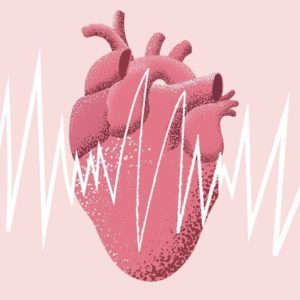5 min|Integrative
6 Ways to Enhance Your Detoxification
Health, Gut HealthOur body detoxifies daily
There are three essential phases of detoxification that occur constantly to remove harmful substances that we ingest from the environment, such as pesticides, pollution, and toxicants found in personal care products.(3 Phases of Detoxification) Additionally, these processes ensure that internal toxins, made from natural biological processes, such as ammonia produced from protein metabolism, are neutralized and excreted.
Many of us, due to our modern lifestyle, are chronically exposed to harmful substances, typically referred to as ’toxins'. It has never been easier to ingest small amounts of toxins throughout the day. This places a high demand on our detoxification organs, delicate systems that require specific conditions to work effectively and efficiently. Inefficient detoxification can lead to a wide variety of symptoms and is suspected to predispose to many diseases and conditions. There are many steps we can take daily to support detoxification.
How can you improve your ability to detoxify?
1. Reduce Exposure to Toxins
Of course, the first step in improving detoxification removing the sources of toxins from our lives. The fewer toxins we are exposed to, the lesser the demand placed on our detoxification systems. It can be tough to eliminate all sources of synthetic toxins - also known as toxicants - but you can begin at home. Choose organic produce and organic and hormone-free animal products; replace plastic with glass products; choose natural home and body care supplies. The Environmental Working Group is an incredible resource; you can find information regarding the quality of your tap water, various skin and hair products, as well as cleaning products.
2. Provide Cofactors for Phase I and II
Phase I and II of liver detoxification requires many nutrients (3 Phases of Detoxification). Eating a healthy diet, rich in vitamins and minerals, can help to provide these nutrients. Specifically, the liver uses a significant amount of B vitamins, magnesium, and certain amino acids. Certain foods are rich in these nutrients and can be included in a liver-healthy diet, for example:
- Glutamine - organ meat, beef, pork, chicken, spinach, parsley
- Glycine - collagen, gelatin, bone broth, connective tissue, organ meat, chicken
- Cysteine - whey protein, beef, chicken, pork, eggs, seafood, broccoli, onions, garlic, Brussel sprouts
- Magnesium - dark leafy greens, nuts, seeds, bananas, avocados, cocoa, seafood
- Vitamin B5 - egg yolks, broccoli, kale, cauliflower, organ meat, brewer’s yeast, chicken, avocados, salmon
- Vitamin B6 - organ meat, fish, spinach, bananas, potatoes, sweet potatoes
- Vitamin B12 - organ meats, meat, poultry, eggs, dairy, shellfish
- Vitamin C - citrus fruits, tropical fruits, berries, bell peppers
- Selenium - Brazil nuts, organ meat, seeds, broccoli, spinach, cabbage, seafood, pork, beef, chicken
3. Stay Hydrated
Adequate hydration supports detoxification via the kidneys and bowels. Constipation can interfere with detoxification, leading to auto-intoxication, toxicity due to a build-up of internal toxins. Consuming a diet of fibre-rich foods, such as many of those listed above, and ensuring adequate hydration can help to support healthy bowel movements.
However, the quality of water we consume is important. Without adequate filtering, we can be exposed to a variety of toxins commonly present in tap water, such as chlorine, fluoride, and lead.(1) In Vancouver, Your Water Matters offers a variety of filtration methods, from countertop units to installable systems.
4. Decrease Gut Inflammation
We need a healthy gut lining for the absorption of nutrients required for healthy detoxification. A healthy gut also leads to healthy and regular bowel movements, allowing for the natural elimination of toxins. Additionally, gut lining proteins known as anti-porters help to transport toxins out of cells and into the gut for elimination. Dysbiosis and gut inflammation has been linked to decreased detoxification within Phase I and Phase III, as well as impaired kidney detoxification.(2-4)
Depending on the state of your gut health, it may be helpful to proceed through a gut healing protocol (5 Steps to a Healthy Gut). Additionally, in cases of dysbiosis, your microbiome may need specific attention and balancing (Gut Microbiome Can Easily Heal With Proper Bacteria).
5. Work Up a Sweat
Regular exercise has many benefits, including enhanced detoxification. Exercise can improve digestion and promote the clearance of waste, via its effects on the vagal nerve.(5) Exercise enhances glutathione activity, a key molecular component of phase II detoxification.(6) (Why Glutathione Is Essential To The Body) Sweat, via exercise or sauna, carries both hydrophilic (water soluble) and lipophilic (fat soluble) compounds out of the body, eliminating toxins from the body.
Sauna therapy can be particularly helpful for removing fat-soluble toxins that accumulate within the fat tissue in the body. Sauna therapy has been shown to increase toxin excretion, and improve symptoms of certain toxic and inflammatory-related conditions, with minimal side effects.(7,8)
6. Supplement with Key Nutrients
Depending on your health concerns, it may be helpful to supplement with specific antioxidants, bile stimulants, amino acids, and vitamin and mineral co-factors for Phase I and II detoxification. Depending on the nutrient, as well as the state of your gut health, it can be difficult to absorb sufficient amounts of these nutrients.
At Integrative, we often prescribe liposomal nutrients or intravenous treatments, to improve absorption and utilization, especially if impaired detoxification is a concern. Liposomes are microscopic spherical delivery systems composed of a lipid (fat) bilayer; when a nutrient is encapsulated in a liposome, nutrient absorption is significantly greater than typical oral delivery.(9,10)
Intravenous delivery, a process by-which nutrients are delivered directly into the bloodstream, provides even greater rates of absorption, but can be costly and requires in-person visits to our lab. Learn more about IV Therapy
Discuss with your Naturopathic Doctor to determine what method of nutrient supplementation would be ideal for you, and which specific nutrients your body may benefit from.
REFERENCES
- https://www.wqa.org/learn-about-water/common-contaminants
- https://www.ncbi.nlm.nih.gov/pubmed/?term=Endotoxin+downregulates+hepatic+expression+of+P-glycoprotein+and+MRP2+in+2-acetylaminofluorene-treated+rats
- https://www.ncbi.nlm.nih.gov/pubmed/?term=Suppression+of+drug-metabolizing+enzymes+and+efflux+transporters+in+the+intestine+of+endotoxin-treated+rats
- https://www.ncbi.nlm.nih.gov/pubmed/?term=Augmentation+of+mercury-induced+nephrotoxicity+by+endotoxin+in+the+mouse
- https://www.ncbi.nlm.nih.gov/pubmed/20948179
- https://link.springer.com/chapter/10.1007/978-1-4615-5097-6_4
- https://www.ncbi.nlm.nih.gov/pubmed/9553837
- https://www.ncbi.nlm.nih.gov/pubmed/18685882
- https://www.ncbi.nlm.nih.gov/pmc/articles/PMC4915787/
- https://www.ncbi.nlm.nih.gov/pmc/articles/PMC4818067/
Related Articles

5 min|Rhiannon Lockhart
The Gut-Skin Connection: How Your Gut Health Affects Your Skin
Gut Health, Skin Health
5 min|Rhiannon Lockhart
How Your Gut Microbiome Affects Weight Loss, Hormones, and Overall Health
Nutrition, Health, Hormones


